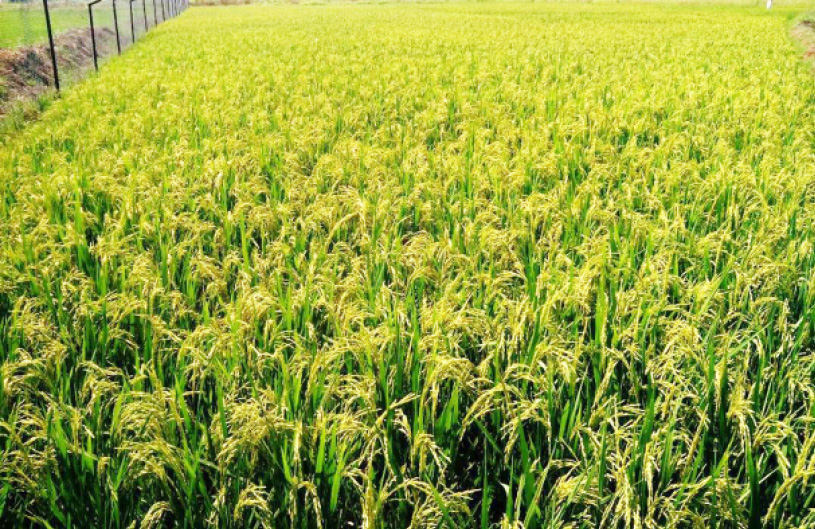The National Cereals Research Institute (NCRI), Badeggi, near Bida, Niger State, recently released new varieties of rice, acha and soybean for seed multiplication for this year’s planting season.
NCRI’s mandate crops include rice, soybean, beniseed, acha, Castor seeds and stevia plant and it has been working with local and international partners like the International Institute for Tropical Agriculture (IITA), Bayer Nigeria and SEEDCO to get the new varieties to farmers across the country.
- How 17-year-old was arrested for removing boy’s eye for charm
- Technology: Adhere to 70:30 admission ratio, Buhari orders polytechnics
The executive director/chief executive officer of the institute, Dr. Aliyu Umar, said these new varieties would add to the list of those that have so for been released and adopted by farmers across the country.
Acha
The institute released its first acha (fonio) varieties named NCRIACH 1 and NCRIACH 2.
The released NCRIACH 1 has a potential yield of 818.03kg per hectare; it is high yielding, with a yield advantage of 41.87% over and above the popular check.
It has high tillering-cum-branching, good grain quality and good market value. It also resists leaf miner pests, is tolerant to leaf spot and leaf rust diseases. It can be planted in northern, southern and derived savannah ecologies
The NCRIACH 2 has a potential yield of 1.48t per hectare, yield advantage of 47.45% over and above the popular farmers’ variety.
It also has good tillering ability and resistance to lodging, good grain quality, good marketing value, tolerant to leaf miner pests, tolerant to leaf spot, strip and moderately resistant to leaf rust disease, and can also be planted in northern, southern and derived savannah ecologies.
Acha (digitaria spp.) is a cereal crop with several names including white fonio, fonio millet, and hungry rice or acha rice. It is the most ancient indigenous cereal of West Africa with a cultivation history dating back to 5000 years.
Currently in Nigeria, acha is grown mostly in states like Kaduna, Plateau, Nasarawa, Taraba, Bauchi and other northern states.
In Nigeria, two species of acha are being cultivated – Digitariaexilis and Digitariaiburua. In the past few years, acha has gained more popularity within and outside Nigeria because of its nutritional qualities.
Dr Umar said acha is becoming very important in the country because of its rich nutritional qualities. The product is often short in supply because of low grain yield per hectare obtained by farmers, which is between 300-500kg and 500-700kg per hectare for D. exilis and D. iburua respectively.
Soybean
NCRI also recently released new soybean varieties which include the NCRISOY 3 (TGX2024-7E) which is early maturing (90 – 100 days), with a yield potential of 3.3 tons per hectare.
It is tolerant to bacterial pustule, Cercospora leaf spot and rust; it has large seed size, is early maturity, high promiscuous nodulation, non-shattering, non-lodging.
The protein content is 39.2 per cent, while the oil content is 20.71 per cent. This variety was registered and released by NCRI in collaboration with the International Institute for Tropical Agriculture (IITA) in 2022.
Another soybean variety is the NCRISOY 4 (TGx2020-4E) which is early maturing (89 – 98 days) with a yield potential of 3.1 tons per hectare, tolerant to bacterial pustule, Cercospora leaf spot and rust.
It is high yielding, with large seed size, high promiscuous nodulation, non-shattering and non-lodging.
It contains 43.97 per cent protein and 20.96 per cent oil. This variety was registered and released by NCRI in collaboration with IITA in 2022.
The third soybean variety released by NCRI is the Sc Signal which is also early maturing (100 days), high yielding (potential yield, 3.3 tons per hectare).
The variety is tolerant to rust disease (Phakopsorapachyrhizi), it is non-lodging, non-shattering and has high pod clearance.
The protein content is 43 per cent, while the oil content is 28 per cent. This variety was developed and released by SEEDCO Nigeria in 2022.
Rice
To deal with the country’s increased demand for rice because of the growing population and value chain activities, the institute developed a hybrid variety named Arize TEJ GOLD.
Hybrid rice technology offers an opportunity to increase rice yields to ensure a steady supply. In the last three decades in Nigeria, rice yield growth reached a plateau and no significant increase is being realized in productivity levels using inbreds.
The Arize TEJ GOLD which was developed by NCRI with a donor from Bayer Nigeria has early flowering compared to the former variety, the yield advantage is 28.42 per cent over the former variety.
The variety also resists pests and diseases, unlike Check. It has a maturing period of between 115 to 120 days. During the trial, the transplanting method gave the best yield of 9.7 tons per hectare.
The second variety of rice released by the institute is the Arize 6444 GOLD, which also showed tolerance to pest and disease, it has a yield advantage of 15.29 per cent over Check, with high productive tillers.
This rice variety has wider adaptability, early maturing of between (115 to 120 days). The transplanting method gave the best yield potential of 10 tons per hectare.
Hybrid rice has the potential to increase yields by 15% to 20% over those of conventionally bred varieties.
According to the institute’s information on the variety, hybrid rice is a proven and successful technology for rice production and can contribute significantly towards improving food security, raising rice productivity and farmers’ income, and providing more employment opportunities over the next three decades.
For the past two decades, the yield of rice has ranged between four to eight tons per hectare and with the increase in human population, coupled with the dwindling arable land space for agriculture, there is need to exploit other technologies that would help leverage this problem of low yield in rice cultivation.
NCRI believes that using local germplasm to exploit heterosis breeding (hybrids) could enable it to break the current ceiling that the already released mega commercial inbred has demonstrated
Inbred rice varieties generally have low yield with maximum yield potential ranging between 4 – 8 metric tons per hectare coupled with susceptibility to most of the biotic and abiotic stresses.
Also, there has been agitation for the registration and release of hybrid rice varieties in Nigeria because of their higher yield potential reported in other countries to meet with teeming population across the country.
Low yield of inbred varieties will no longer be sustainable, hence the genetic improvement of hybrid rice to increase rice production.




